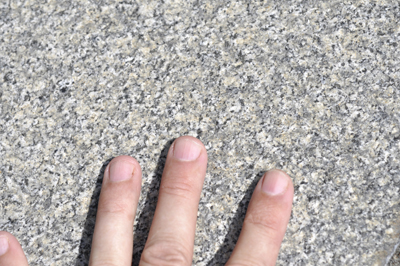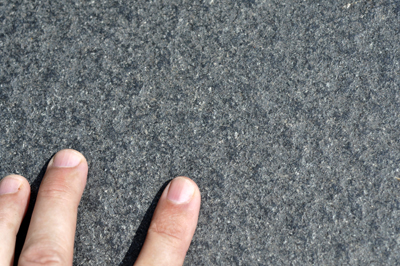In the Minerals unit, we learned that color is not usually reliable for identifying minerals. While it is not a good way to identify minerals, thanks to the melting points of different minerals, it can be useful for identifying igneous rocks.
Remember that igneous rocks form from magma, and not all magmas are the same. Some are hotter (more than 1300°C/2400°F), and some are cooler (as low as 700°C/1300°F). Because different minerals melt at different temperatures, hot magmas are usually very different chemically from cooler magmas.

The most common minerals produced by low temperature magma include quartz, muscovite, orthoclase, and biotite. While biotite is dark colored, quartz, muscovite, and orthoclase are light colored, usually shades of white, pink, or light gray. When you look at the rock as a whole, it is fairly light colored.

The most common minerals produced by high temperature magma include olivine, pyroxene, amphibole, and plagioclase. These minerals are usually dark colored, ranging from black to dark greens and grays, and they produce dark colored rocks.
That difference can give us an indication of the original temperature of the magma, and the minerals that are present in the rock. We will be using this to identify igneous rocks.
